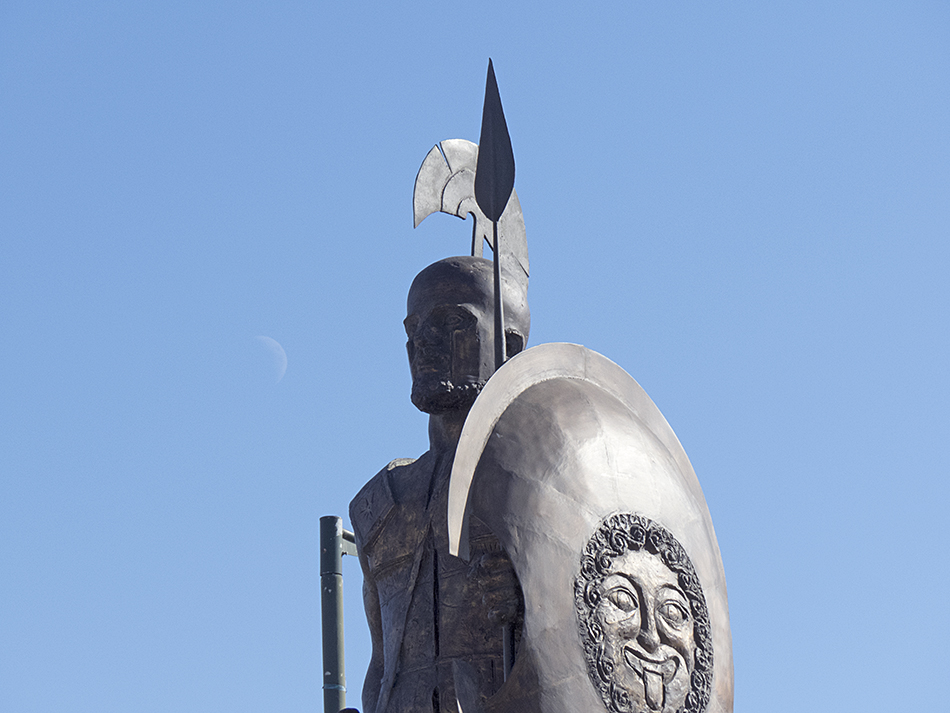
Our closest celestial neighbour has kept us company for at least four billion years and has entertained our imagination in a variety of
ways. It certainly has been involved in our maturation as a species with man's first step on a body beyond our planet during the latter
part of the twentienth century and will, inevitably, be our first stop prior to any sort of manned travel to a further celestial body
such as Mars. The moon has been a great source of education about our own planet's evolutionary history; it has entertained many
inquisitive minds from earlier cultures and generations about the universe in general and man's role in particular; it has enriched the
minds of young children taking their first look through a telescope and continues to impact our lives in ways we may or may not readily
recognize including tidal forces and various natural rhythms and cycles.
Note: The image below is an extension of a prolonged effort to capture the rising Sun and/or Moon against
well-known monuments and sites. The primary task in such an exercise is to reverse engineer as accurately as possible the perspective
of the foreground of interest with respect to its physical azimuth and altitude from the proposed shooting location so as to align the
foreground subject with the background Sun, Moon or other celestial object of interest.
In the example below, the statue of King Ajax of Salamina graces an intersection in central Salamina Island. The island is best known for the
epic naval Battle of Salamis (480 BC) where Greek
naval forces led by Themistocles successfully managed to turn back the Persian naval forces led by Xerxes I and in spite of being
outnumbered by four to one (according to the historian Herodotus). King Ajax ("Βασιλιάς Αίας ο Τελαμώνιος") is described by Homer as
being one of the most feared and successful fighters in the Battle of Troi. He was physically large and seemingly invicible on the
battlefield and which, in part, is attributable to Hercules who approached Ajax when the latter was very young and who bestowed upon him
the skin of the Lion of Nemea which Hercules had killed while fulfilling one of his twelve legendary labours.
The young crescent moon below and immediately in front of King Ajax's head also happens to be a
perigee moon, for its distance from earth, namely 363,499 km when
the image was taken, is very close to the minimum theoretical perigee distance the moon can realize. The moon is with a phase of 30% and
approximately 5.5 days old. For a wider field of view from a few seconds earlier, click
here.
Note: For additional results involving the Sun, Moon and other celestial bodies rising or setting against well-known
monuments and sites from around the world, please click here.
|
Body: Moon Mass: 0.0123 x Earth Mean Eq Diameter: 0.2719 x Earth Distance: 363,499 km Sidereal Rev: 27d 07h 43m 11s Age: 05d 11h 41m Phase: 30.5° Diameter: 32.58' Magnitude: -9.1 Rukl: N/A |
 |
Date: Oct 30, 2022 14:32:46 UT+2 Location: Salamina, Greece Equipment: Canon PowerShot SX60 HS @ 37.5 mm / f8.0 Exposure: 1 x 1/250 sec ISO 100 RAW Image Format 4608x3456 Image Size Manual Mode Software: Digital Photo Pro V1.6.1.0 Photoshop CS6 Processing: RAW to TIFF Conversion Resampling JPG Compression |